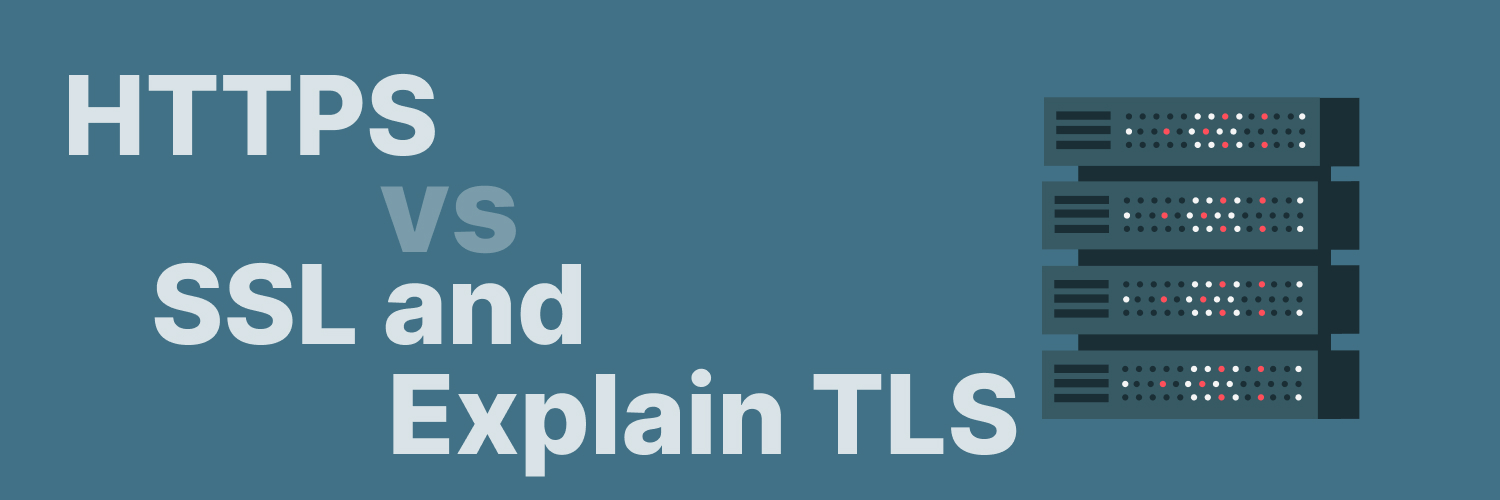The Ultimate Guide To Reselling Shoes In 2022
Reselling shoes can become a lucrative side hustle or even a full-time gig. The market is certainly there. The resell market for sneakers is worth over 2 billion dollars in North America. It is expected to reach $30 billion by 2030, with celebrity athletes partnering with sneaker companies to produce one market-topper after another.
Even if your idea of buying new shoes is dropping $30 at the local big box store, you’re probably aware that limited edition, celebrity-endorsed sneakers are a big business. If you’re curious about how to make money reselling shoes, we have a comprehensive guide to get you started. Feel free to use the table of contents to skip around to the sections that interest you most.
The Rise of Sneakerhead Culture

The term for people who collect, trade, and specialize in sneakers and their lore is sneakerheads, and they largely drive this shoe economy.
Celebrity shoe endorsements are nothing new. Converse sneakers were introduced in 1917, but it wasn’t until five years later, when they partnered with the legendary basketball player Chuck Taylor, that the shoes began their journey to becoming a classic. The name Chuck Taylor is now more synonymous with shoes than basketball.
That early collaboration set the standard for sneaker culture that endures today and doesn’t show any signs of slowing down. Limited edition releases of celebrity-branded sneakers have continued to spur on a market where “buy low, sell high” has resulted in some resellers earning six figures a year from sneakers alone.
How To Start Reselling Shoes
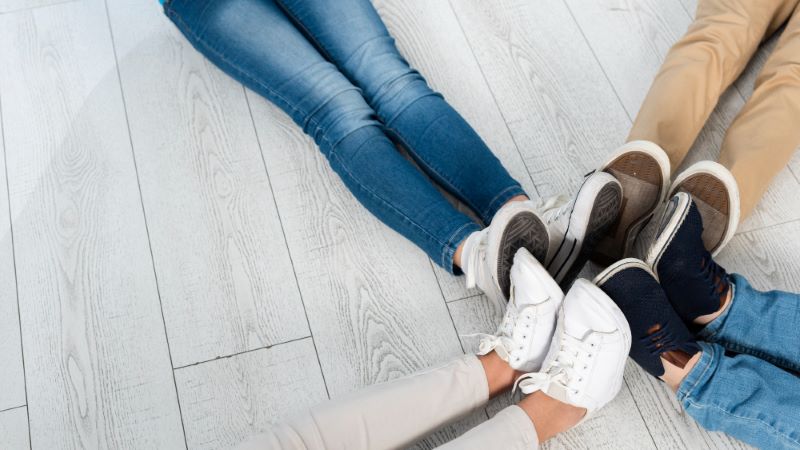
The basics of reselling sneakers are the same as any other product. Find a pair of new or nearly-new popular sneakers at a discount, mark them up, and sell for a profit. The secret lies in reliably finding sneakers to sell. Although you can make some money scouring thrift stores for mint-condition shoes or buying clearance brands at your local shoe store, big money comes from scooping up sneakers produced in limited quantities and sold in shoe drops.
Therefore, the most expensive and most lucrative shoes to resell are limited edition models. Nike and Adidas manufacture enough of these shoes to almost meet market demand. This keeps prices and demand high for the next limited edition release.
This strategy also means there are high profits to be made for buyers fast and lucky enough to snag them when they’re released. Because they quickly sell out before demand is fulfilled, the secondary market is highly competitive. Limited edition sneakers often sell for two to three times their original price.
The Drop: Buying Shoes in Today’s World
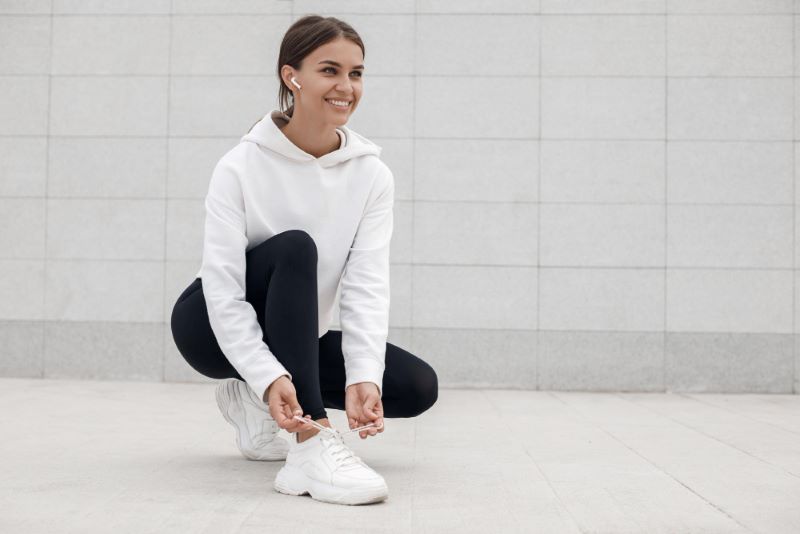
Before we get started on reselling shoes, you need to understand the concept of the drop. In the olden days (before 2017), you had several options available if you wanted to stock up on sneakers. You could buy from an online retailer, directly from a website, or you could visit shoe stores in person. While those outlets are still an option for the fashionably challenged, if you want to score the latest, limited edition trends, you’ll need to get them directly from a “drop.”
The drop was borrowed from Japanese streetwear culture but popularized by the New York-based skater brand Supreme. They started releasing a limited run of products every Thursday at 11:00 a.m. Those lucky enough to snag a product immediately spread the word via social media, which led to skyrocketing demand and prices.
Other retailers noticed, and 2017 became “the year of the drop.” As part of Kanye West’s collaboration with Adidas (the Yeezy line), the Yeezy Boost 350 V2, listed at $220, sold out in less than 30 seconds. The drop was just as successful for shoe retailers, and brands haven’t looked back.
Strategies for Reselling Shoes for Profit
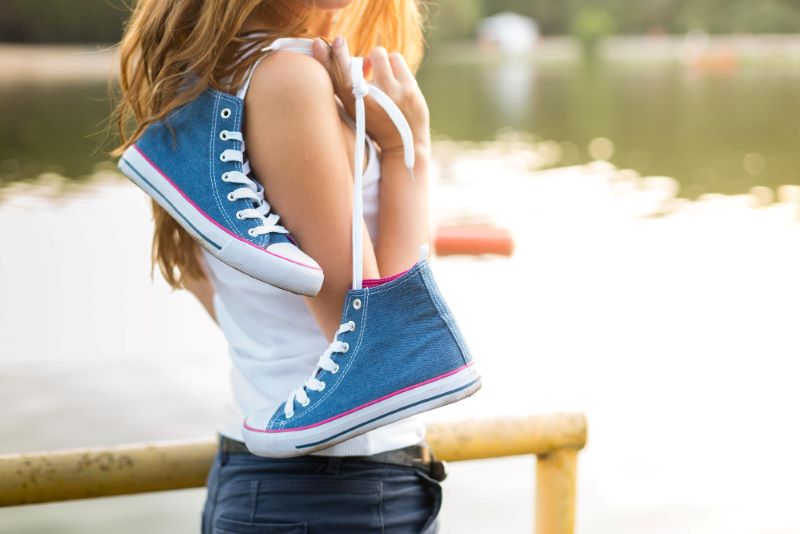
There are several different strategies for reselling sneakers. Some resellers stick with one method, while others use a combination of several. If you’re just getting started, you may want to start with a technique that requires a smaller upfront investment. You can reinvest the money you make in more expensive strategies, which will keep your financial risk to a minimum.
Selling used shoes
Reselling used shoes is the easiest and cheapest way to break into reselling. While you probably won’t make a fortune using this method, it’s a good way to learn what sells, how to use different platforms, and if you enjoy the process. It’s also an excellent way to earn money to break into more expensive methods. Scouring thrift stores, consignment shops, and other platforms for underpriced shoes can be fun. For many resellers, the lure of a treasure hunt is half the appeal.
You’ll have to do a lot of research to find out if that $5 thrift store find is worth buying. There’s a steep learning curve, but eventually, you’ll be able to spot a hidden gem. In the meantime, bring your phone along and plan to look up every pair of shoes before you purchase.
StockX is one of the most popular shoe resale sites. It claims to work just like the stock market, allowing you to buy and sell the most coveted sneakers at their true market price. You can get a historical overview, over the past 12 months, of how much a particular pair of sneakers have sold for and track their value, much like hedge funds do with business stocks.
If you can’t find a pair of shoes on StockX, you can check eBay. This doesn’t give you as much detailed information, however. Enter the brand and style of shoes into eBay’s search function. Don’t rely on listed prices. In the “advanced options” on the search screen, check the box beside “sold listings.” This will let you know what prices shoes have actually sold for instead of the listed price, which is sometimes wishful thinking.
Shoes in good condition sell better than shoes that look worn. You may want to bypass shoes that have seen better days regardless of the brand. However, if you’re willing to invest some time and effort, you may want to check out the next strategy, restoring sneakers.
Restoring shoes
This is closely related to selling used shoes. Resellers who restore shoes will buy old or worn shoes to restore and sell. This should only be attempted with shoes that are likely to fetch a high price and if you’re able to buy them extremely cheaply.
Stick with low-risk, high reward options for shoe restoration since you may not be able to recoup your investment if you spend a lot. You’re likely to ruin several pairs of shoes before you develop the ability to do a quality restoration. Restoring shoes is also labor-intensive, so you’ll need to make a good profit to reimburse yourself for labor in addition to normal expenses.
Restoring sneakers is a craft, particularly if you need to paint them to bring back vibrant colors. You will probably want to find a good guide and practice on some cheap sneakers before you try your hand on those Air Jordan 1s from the late eighties.
Outlet hunting
If you like the idea of bargain hunting but don’t want to resell used shoes, outlet hunting may be a good option. With this strategy, you look for steep discounts on new shoes and resell them at the market rate. Physical outlet stores are your best option, although they will involve a lot of time driving to stores and scouring clearance racks. By checking prices on StockX or other reselling platforms, you’ll know if you’re getting a good deal or not.
Sneaker holding
Sneaker holding involves holding onto shoes until market demand increases. The fewer unworn popular sneakers that exist, the more they’re worth. For instance, a pair of original Nike Yeezy will sell for thousands of dollars. In addition to luck, this strategy takes some patience. A shorter-term version of this strategy is to buy a new pair of sneakers and hold it for three to six months.
This requires a hefty initial investment since you won’t be turning it around quickly. It often involves buying in bulk from other resellers who purchased on release day. If this is your strategy, it pays to know your niche. You might want to stick to one brand or even one line and learn everything you can about it. You’ll need to figure out which shoes will increase in value over time.
Botting
Because shoe drops are so competitive, it’s almost impossible to get one highly sought-after pair of sneakers without using a sneaker bot. A sneaker bot is a program that uses pre-filled information to quickly and automatically purchase shoes exactly at release time. Sneaker bots are much faster than humans, so before you’ve clicked “Add to Cart,” the sneaker bot has completed multiple purchases.
Using a bot isn’t as simple as it sounds, but it is the most profitable sneaker reselling strategy. Using a sneaker bot requires some technical knowledge and upfront resource investment. We’ll go in-depth into using a sneaker bot later.
The Best References for Buying and Selling Sneakers

You don’t need to be a full-on sneakerhead to make money selling sneakers. Shoes are a commodity, so the market has expanded beyond collectors to include almost anyone interested in turning a profit. However, you need to do some research to formulate a profitable strategy and know which shoes will sell.
Trends and information
Successfully reselling shoes depends on staying on top of the latest trends. These resources are a great place to find out what brands and styles the fashionable set is pining over and the latest industry information.
HYPEBEAST
HYPEBEAST is one of the leading men’s contemporary fashion and streetwear websites. Though it covers more than just shoes, you can stay current on the latest trends in sneakers and which brands are getting ready to release a new style. Their drops calendar is a valuable feature that lists the dates for upcoming drops.
Some more great features of HYPEBEAST include the brand ranking tool, which ranks brands according to popularity, and the HypeIndex, a market indexing tool that tracks publicly-traded fashion companies featured in their headlines.
HIGHSNOBIETY
HIGHSNOBIETY is another fashion website where you can get an idea of what’s hot in shoe culture. Their Insights on Youth Culture section provides an overview of some of the driving forces behind the fashion industry, in which sneakers play a significant role.
Communities
Getting started buying and selling sneakers can be overwhelming, but there’s a big community of sneakerheads willing to share their expertise and offer advice. Here are some of the best places to learn more:
YouTube channels
Whether you’re looking for information about sneaker styles or reselling strategies, YouTube has it all. Some of the best YouTube sneaker channels include:
Some top sneaker reseller YouTube channels are:
Twitter is one of the top social media platforms for sneaker-related news and culture. You can find out about restocks and deals that aren’t advertised elsewhere. Some of the best sneaker Twitter accounts include:
Discord servers
Discord servers can double as a way to learn more about reselling sneakers and a platform for reselling. Some function as “cook” groups, cook being the sneakerhead slang for buy, where you can join and take advantage of some automated functions to increase your chance of buying a pair of Travis Scott Jordans on drop day. Others alert you to shoes selling for less than their retail price. Some popular sneaker Discord groups are:
Reselling platforms
Once you have a pair of sneakers you feel will turn a profit, there are many options for listing. Some platforms are free, and some take a percentage of every sale. StockX, GOAT, and eBay are the most popular sites for sneaker reselling.
It’s important to know and follow the rules for selling on each platform. For instance, you can’t sell used shoes on StockX, although it’s fine on eBay and Mercari. Some platforms will allow anyone to sign up for an account, while others require approval. Here are some common platforms:
Authenticating Shoes for Reselling
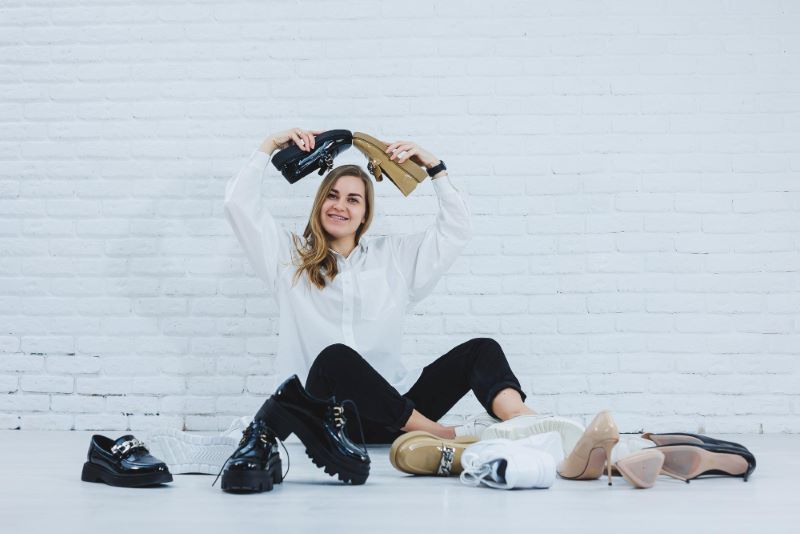
No matter where you’re buying or reselling shoes, you have to make sure they’re authentic. With so much money to be made in high-value sneakers, fakes are increasingly more sophisticated and difficult to spot. Even if it’s an accident, selling knock-offs will get you banned from most platforms. StockX has the most stringent standards, requiring you to ship your shoes to them for verification before going to the buyer.
Most platforms require you to verify on your own, which can be difficult, especially if you’re new to reselling. Here are some tips for ensuring the shoes you’re buying and selling are the real deal:
1. Know your source
If you’re buying from someone you don’t know, do some research. If they’re selling on a social media website, but they only have three friends and two pictures, you should dig a little deeper. When dealing with a website you aren’t familiar with, look up reviews on Trust Pilot or use a search engine the name and “scam” and check the results.
2. Ask for a receipt
Receipts can be faked and aren’t foolproof. Still, if a buyer has a receipt from a legitimate store with their personal information, it’s likely to be real. For this reason, you should always keep the receipt for shoes you buy directly from a retailer.
3. Check the box and tags
If the box your sneakers are in contains spelling errors or other flaws, it’s probably counterfeit. It should be fairly easy to find a picture of the actual box on the internet to compare. The biggest giveaways for fake shoes are the packaging and tags. Take time to compare the small details. The UPC should be the same for every pair of shoes of the same size for a particular brand and style.
Those numbers on the boxes and tags mean something, and manufacturers can track what shoes come from what plant and production dates. Counterfeiters often make up these numbers and dates, but the authentic information is usually readily available online.
4. Compare the details
In addition to the details on the packaging and tags, look at the details on the shoes themselves. Notice the stitching. Is it spaced the same as an original, or are the stitches significantly farther apart? Do the colors match? Look at the inside and compare the linings. If you don’t have an original to compare it to, you can find detailed pictures online.
If you’re buying in person, give the shoes a sniff. Fake shoes are usually made with cheap materials that release smelly fumes. If the shoes have a toxic scent, pass them up.
5. Use a third-party authentication checker
Sites like StockX authenticate all of their shoes before shipping so you can be sure they’re real. Similarly, eBay offers an optional authenticity guarantee. Those are great options for those sites, but what if you’re buying from an individual or consignment shop? Although they aren’t as reliable as in-person checks, some apps will verify a pair of shoes’ legitimacy for you.
CheckCheck lets you send in specific pictures and pay a few dollars to verify your shoes in as fast as 30 minutes. LegitCheck has a DIY option with a list of characteristics that can help you spot a fake. This app also offers a white-glove authenticator service. You send in specific pictures, and within 48 hours, an expert will get back to you with a conclusion and the reasons behind it.
Tools To Make Money Reselling Shoes
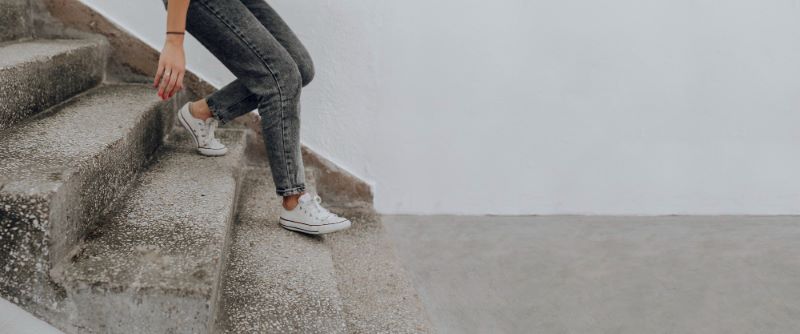
You can get started reselling shoes with a few dollars and a good thrift store find, but if you want to level up your game and make serious money, you need to invest in some tools and get a little technical. Learning how to use bots for sneaker reselling is slightly complicated but achievable, and the payoff can be huge.
Sneaker bots
A bot is an automated software program that performs functions much faster than a human. Bots are used for many purposes, but sneaker bots buy sneakers during shoe drops. These bots continually check for available shoes and use automated add-to-cart and checkout features to ensure you close the sale.
To run a bot, you fill out your purchasing information ahead of time, so it’s ready to go when there’s a shoe drop. You then tell the bot what to buy. You can set it up to purchase from a specific URL or indicate a particular product. An efficient bot can buy sneakers in as little as 0.2 seconds.
Sneaker bots are available as browser extensions or stand-alone solutions. Browser extensions work with Chrome and the front end of a site. They’re slower and are at the mercy of the website. If the website crashes, the bot has to restart. Your computer’s processing speed also limits it. The biggest advantage of browser extension bots is that they’re cheaper than other options. You may want to start with one to learn how they work without making a large investment.
Stand-alone bots are faster and perform better. They work with the back end, so they aren’t handicapped if a website crashes. However, they usually cost several times more than browser extension bots. If you think you’re ready to move up to a stand-alone bot but not quite ready to purchase one, you can rent one. This is also a good option if you’re trying to decide which bot you want. You can take several for a test drive before making a final decision.
You’ll also need to pick a bot based on the sites it’s compatible with. Some work only with specific brands or sites. All-in-one (AIO) bots are available, but they don’t necessarily work with all sites despite the name. It’s usually best to choose the best-performing bot for each site you’re botting. Make sure the bot you’re considering is compatible with the sites you use.
No matter which bot you choose, it should contain the following fields:
Task
This is where you give your bot instructions, telling it what shoes to buy, what sizes to order, and where to buy. A good bot should accommodate tasks into the hundreds so that you can “cop” or buy multiple pairs at once.
Monitor
When a shoe drops, the bot will continuously monitor the site, which involves reloading it to check for the release. Joining a cook group on Discord can help you set up the monitor group for maximum efficiency.
Billing profiles
To get around the store limits on how many pairs of shoes you can buy, you’ll need to set up multiple billing profiles. This lets you use a different payment method and slightly change your address for each purchase. If you don’t have multiple cards, you can set up virtual credit cards as a payment option.
CAPTCHA harvester
Some sites put up CAPTCHAs to thwart bots. Advanced bots will have a CAPTCHA harvester to help bypass them.
Proxies
Proxies are an essential part of using a sneaker bot, and these IP addresses make it seem as though different devices are making each request. In the next section, we’ll discuss these in detail, but the key thing to know is that you can’t use a sneaker bot without proxies.
Proxies
A proxy IP address acts as an intermediary between your device and the site it’s visiting. You send your request to the proxy server. The proxy server puts a different IP address on your request and then sends it to the website. The website sends a response to the proxy server, which sends it back to you. This protects your actual IP address.
Proxies are necessary because most websites try to discourage bot activity. The main way they do this is by blocking an IP address if they detect bot-like activity originating from it. Because bots are so much faster than humans, they’re pretty easy to detect. Proxies make bots seem more human by sending a different IP address with each request. These are called rotating proxies.
If you send 100 different requests, each one will have a different proxy IP address. The result is that the activity looks like 100 different users are sending one request instead of one user sending 100 requests. Since websites don’t want to block legitimate users, they are less likely to block those IP addresses. However, even if one IP address is blocked, you have others to take its place.
There are many different types of proxies, but the two most common ones for sneaker bots are data center and residential proxies.
Data center proxies
Data center proxies originate in a data center, and they are cheap and plentiful. They can be the cost-efficient method if you’re just getting started. However, data center proxies have some significant disadvantages. They are easily identifiable as being data center proxies. Since most people don’t use data center proxies, websites are likely to flag and block them for being bots.
Another problem with data center proxies is that some websites ban an entire subnet when they detect bot activity from one data center IP address. If you use data center proxies, you must choose a provider with a wide subnet diversity to ensure that you experience as little downtime as possible.
Rayobyte’s data center proxies are spread across seven unique ASNs in 27 different countries. We offer free, instant, automatic replacement to get back up immediately after a ban because losing seconds can mean losing your chance to buy limited-edition sneakers. Our unmetered bandwidth and unlimited threads give you the power you need to run advanced sneaker bots.
Residential proxies
Residential proxies are issued by internet service providers (ISP). This is probably the type of IP address you have at home. These proxies have the legitimacy and authority that data center proxies lack. They look like regular IP addresses because they are. Residential IP proxy addresses are much less likely to get banned if they’re rotated because they seem like normal human users.
The biggest drawback to residential proxies is that they’re more expensive than data center proxies because they’re harder to source. Ethically sourcing residential proxies involves reimbursing the end user and ensuring they control how and when their IP addresses are used.
Rayobyte has set the standard for the ethical sourcing and use of residential IP addresses in the proxy industry. Our residential proxies are acquired from end-users who are directly paid and give their full and informed consent. They can decide how they want their IP addresses to be used, and they can withdraw their consent at any time. We’re committed to providing the best experience for our end-users and customers.
Our goal isn’t just to sell you proxies; our goal is to sell you success. We’ll work with you to find a custom solution to fit your needs. Reach out today to discover how our team can help you achieve your goals.
Final Thoughts
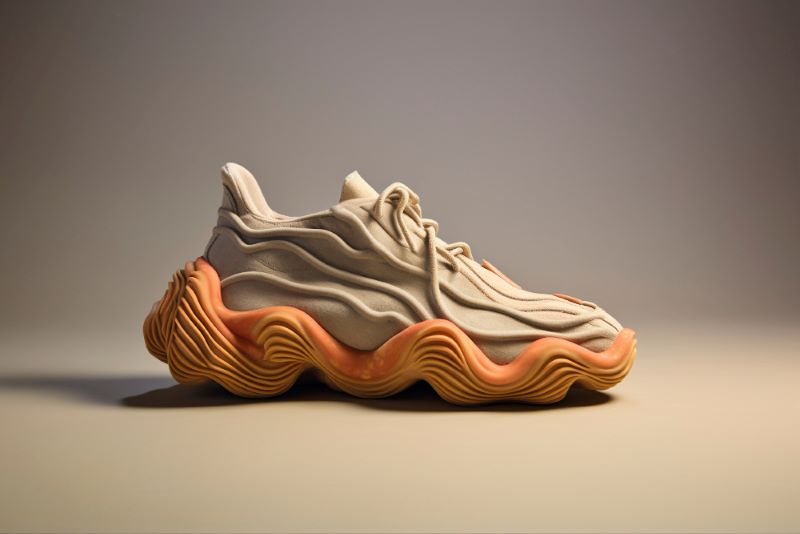
Reselling shoes can be a fun and lucrative hobby or a full-time job, provided you have the right tools and skills. Whether you’re fascinated with sneakerhead culture or just want to cash in on the shoe commodity market, understanding the pros and cons of different reselling methods can help you get started. Optimizing your buying and selling strategies with sneaker bots and proxies will take your business or hobby to the next level.
Ask questions, explore new content and connect with the proxy and sneaker community through our Discord channel! Join here.
The information contained within this article, including information posted by official staff, guest-submitted material, message board postings, or other third-party material is presented solely for the purposes of education and furtherance of the knowledge of the reader. All trademarks used in this publication are hereby acknowledged as the property of their respective owners.
Disclaimer– Links we reference are not our responsibility and we are not associated with those companies






